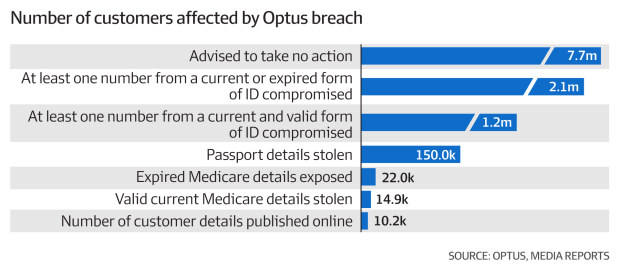Optus is paying for credit checks. Here’s how to get yours for free
After last month’s massive data breach Optus tried to soothe angry customers by offering to pay for a credit monitoring service for a year.
The telecommunications giant has tasked credit monitoring service Equifax to monitor the web for any signs of fraudulent activity related to affected Optus customers.
The exercise is likely to prove costly for Optus, given personal details of 9.8 million customers were exposed, and of those about 2.1 millionwere of a current or expired identity document.

A top-level subscription at Equifax can cost up to $14.95 a month. But for any other people worried about hackers using their details to steal money, all credit monitoring companies are required to offer free services to guard against credit fraud and theft.
Here’s how these services work, and how consumers can navigate the world of credit monitoring.
Who monitors credit in Australia?
There are three main providers of credit monitoring: Equifax, illion and Experian. The broader industry, which includes ratings agencies such as S&P, has annual revenue of about $722.7 million.
What do they do?
A credit reporting body handles personal information “to provide another entity with information about the credit worthiness of an individual”, according to the Office of the Australian Information Commissioner (OAIC).
Many create credit scores that outlets such as banks use when determining if a customer can get a loan.
In cases like the Optus breach, credit monitoring services can also monitor for identity theft. The companies can track buying patterns after credit card details have been compromised with a view to notifying the holder of any suspicious activity.
For comprehensive reporting, the credit bureaus charge a subscription fee.
But didn’t you say we could get it for free?
That’s right. Under the Credit Reporting Act, which is overseen by the OAIC, the companies are required to give consumers access to a credit report once every three months for free. Individuals can also request a free copy if they have been refused credit within the past 90 days, or if their personal credit information has been corrected.
So, exactly what do these organisations track?
Credit bureaus continually scan the internet and sources of credit activity for applications made in consumers’ names, discrepancies in their buying patterns, repayment histories.
What more do you get if you pay?
Paid-for plans offer features such as credit alerts, dark web monitoring of sharing of personal details, document expiry alerts and in-house developed trackers of creditworthiness.
And finally, I think I’ve been hacked. What should be my first step?
The OAIC has recommended those who believe they are likely to be the victim of fraud to “make the request to all credit reporting bodies” to obtain a free consumer credit report.

